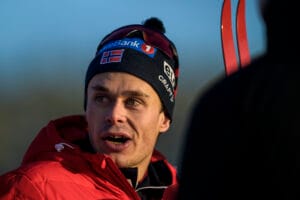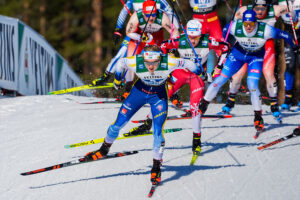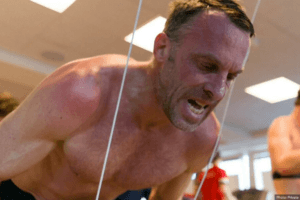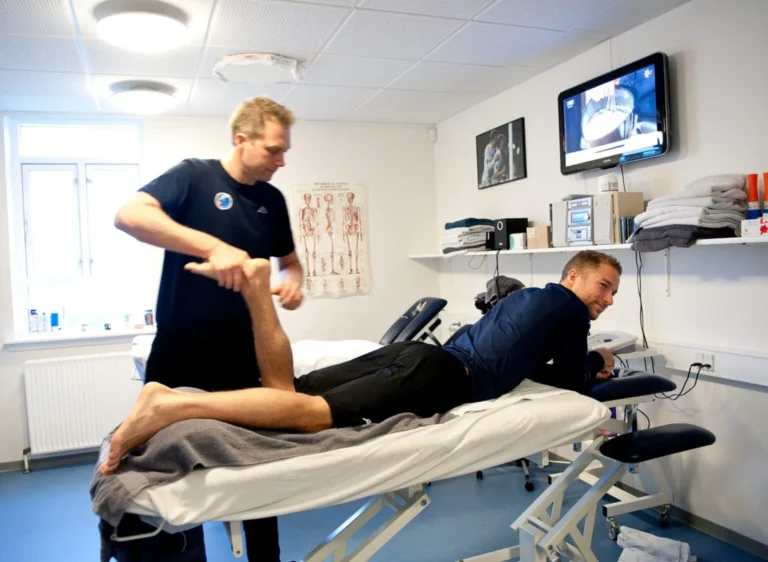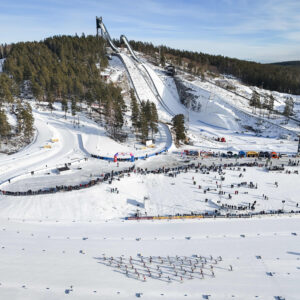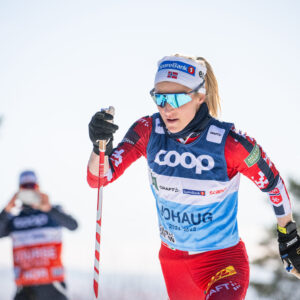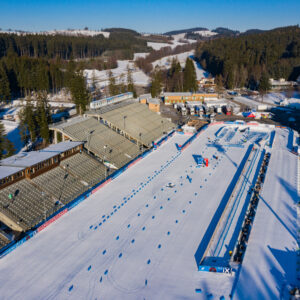VO2max – Who has the highest values in history?
Maximal oxygen uptake (VO2max) is one of the most well-known and fascinating measures in endurance sports. Cross-country skiers are known to have some of the highest values, but who holds the highest recorded VO2max? This article first explains what VO2max means and then highlights a few endurance athletes from the past whose recorded values are believed to be among the highest in the world.
VO2max: A Measure of Endurance Capacity
VO2max, or maximal oxygen uptake, is essential in all endurance sports due to the physical demands they impose. Cross-country skiing, in particular, requires the coordinated use of the entire body and its muscles while the metabolism and oxygen consumption operate at full capacity. Skiing allows you to move through the stunning winter landscapes, pushing your body to its limits.
It’s evident that the faster you move, the more demanding the effort becomes, as your muscles require increasing amounts of oxygen to match the rising intensity. Professional skiers encounter this discomfort in every competition, but it becomes addictive—pushing oneself to the limit is key to endurance sports.
VO2max, a measure of an athlete’s physical fitness, represents the maximum volume of oxygen the body can consume during intense exercise. Elite skiers are known to have some of the highest VO2max values, as the nature of the sport demands exceptional oxygen utilization capacity.
For those unfamiliar with the term, VO2max refers to the peak oxygen consumption measured during a graded exercise test, where intensity progressively increases. The term comes from three components: “V” for volume, “O2” for oxygen, and “max” for maximum.
VO2max reflects the health of an individual’s cardiovascular and respiratory systems, crucial for sustained physical performance over long durations. It is typically expressed as an absolute value in liters per minute (L/min) or as a relative value in milliliters of oxygen per kilogram of body mass per minute (mL/(kg·min)). The latter is often used to compare performance among endurance athletes.
The average untrained healthy male has a VO2max of approximately 35–40 mL/(kg·min), while for females, the range is 27–31 mL/(kg·min). These values can improve with training but decrease with age. However, the impact of training varies significantly between individuals; some respond exceptionally well, while others see minimal improvements. This adaptability is partly genetic, though anyone can enhance their VO2max with consistent exercise.
VO2max – Historical Data
Historical data reveals remarkable VO2max achievements. Norwegian skier Bjørn Dæhlie, shown in the article’s main image with his 1998 Olympic medals, recorded one of the highest VO2max values at 96 mL/(kg·min). Similarly, five-time Tour de France winner Miguel Indurain reached an impressive 88 mL/(kg·min) at his peak. The endurance sports world was stunned when Norwegian cyclist Oskar Svendsen logged a VO2max of 97.5 mL/(kg·min) at just 18 years old in 2012.
It’s worth noting that in some endurance sports, like rowing, athletes often have higher body masses than skiers. This results in slightly lower relative VO2max values per kilogram, but their absolute VO2max in liters is much higher. For instance, British rower Sir Matthew Pinsent reportedly reached a VO2max of 7.5 L/min.
In cross-country skiing, Finnish athlete Juha Mieto recorded the highest VO2max in the sport’s history at 7.49 L/min during a test in Jyväskylä in 1984. Mieto had achieved a similar value at 23 years old in a Stockholm laboratory in 1973. At the time, the three-time Finnish champion stood 196 cm tall and weighed 96 kg. Due to his high body weight, Mieto’s relative VO2max value (mL/(kg·min)) was never world-class.
Read also: Threshold training – How is it done?

What About Women? Who Holds the Highest Recorded VO2max Value?
The honor of the highest recorded VO2max among women belongs to Joan Benoit, the 1984 Olympic marathon champion, with a value of 78.6. Close behind is Norwegian cross-country skier Bente Skari, who achieved a value of 76.6. Charlotte Kalla and Marit Bjørgen also rank highly, with values of 74 and 72, respectively.
Ski Classics athletes have also recorded impressive VO2max values, despite the common perception that long-distance skiing is less demanding in terms of oxygen uptake. Petter Eliassen measured approximately 88 mL/(kg·min) at the end of his career, while Anders Aukland reached similar values. Even three-time Ski Classics champion Andreas Nygaard is not far behind. When measured purely in double-poling tests, Ski Classics skiers are among the world’s elite. For instance, Eliassen’s maximum value while double-poling was only slightly lower than his result using poles and running. Remarkably, Nygaard surpassed Eliassen in a treadmill test conducted a few years ago, solely with double-poling.
Read also: Speed training brings speed to your skiing
The article continues after the image.

Petter Eliassen (NOR) – Visma Ski Classics, Toblach-Cortina (ITA). www.nordicfocus.com. © Reichert/NordicFocus.
Petter Eliassen’s Exceptional VO2max
In the featured image, Petter Eliassen celebrates his victory at the 2020 Vasaloppet. Known for his exceptional oxygen uptake capacity, Eliassen exemplifies the high-end performance of elite skiers.
Male skiers have recorded VO2max values around 90 mL/(kg·min), with some individuals even surpassing this benchmark. In a 2018 Iltalehti article, coach Toni Roponen provided a breakdown of VO2max ranges for different types of athletes:
- Recreationally active men: 40–50
- Endurance enthusiasts: 45–55
- Marathon runners (3-hour finish): ~60
- Elite football players: 60–70 (with the world’s best reaching 70)
- Endurance athletes: 60–75
- Top endurance athletes: 80–90
- Champions in endurance sports: Over 90
These impressive figures represent the extraordinary talent and training of elite athletes. However, average skiers need not worry about achieving such high values. VO2max improves with regular training, and recreational skiers can focus on enjoying the sport rather than obsessing over numbers. Incorporating varied intensity into workouts will naturally boost fitness.
For those aiming to excel in mass ski races or improve their performance, interval training, and threshold workouts are excellent additions to a training routine.
For more articles on ski training, visit ProXCskiing.com.

